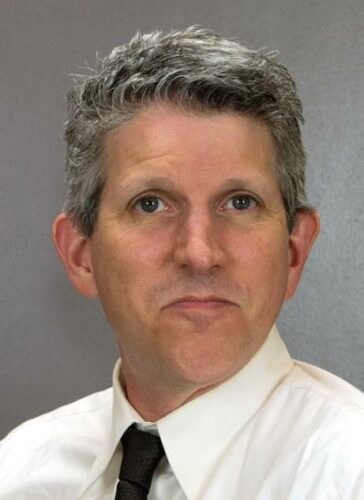Ten years ago, then-Association for Psychological Sciences President Mazarin Banaji put out a call to action for faculty to improve Wikipedia’s coverage of psychological science. In particular, Banaji encouraged faculty to assign students to edit Wikipedia, in collaboration with what’s now known as Wiki Education’s Wikipedia Student Program.
Ben Karney of the University of California at Los Angeles was listening.

(Image courtesy Ben Karney, all rights reserved.)
“At that time, most of the articles on major psychological ideas and theories did not seem to have been written by psychologists — they were incomplete at best and full of errors at worst. Who better to revise and refine the most influential source of information in the world than the people who were trained to think about these things?” he says. “That seemed like a compelling argument to me, so when I took over the 1st-year seminar in Social Psychology for our incoming doctoral students at UCLA, I wrote the Wikipedia assignment into the syllabus.”
Every fall, Karney has assigned his students to improve Wikipedia. Individual students’ work is excellent, each class’s contribution is amazing, but the sum total of the impact he’s made to Wikipedia is astounding. Karney has brought 146 student editors to Wikipedia. All told, they’ve added 547,000 words of content to 368 articles, including creating 48 new articles. Examples of their work include the articles on social emotional development, social cognitive neuroscience, and positive stereotype, all articles created and mostly written by his students, while articles like perspective-taking, moral blindness, and immigrant paradox were almost completely rewritten by them. Their work has been viewed more than 46 million times.
And Karney loves how the Wikipedia assignment meets his pedagogical goals.
“There is a huge difference between writing for an audience of one (the instructor) and writing for an audience of thousands or even millions on Wikipedia. The assignment highlights what our writing is FOR, which is to inform the public. Students feel this responsibility and take it seriously,” he says. “Furthermore, the assignment allows them to enact themes that run through the history of Social Psychology. We start our course reading the work of Kurt Lewin, who firmly believed that research in psychology should be designed to make a positive difference in the world. The Wikipedia assignment allows students to enact Lewin’s values right there in the course, and to feel the impact of their work in their interactions with editors and commenters. It’s a world of difference from writing a term paper that only I will read.”
Pedagogy aside, it’s also an assignment students love, Karney says. As graduate students, they’re well-versed in research and writing, but the idea of writing a Wikipedia article is a little different. Initial hesitation prompts questions like how much detail they should go into, how long it should be, Karney says.
“But then they figure out the technical parts and get excited about the prospect of reaching a LOT of people with their work,” he says. “They realize that Wikipedia editors are reading everything they post. They start to compare the number of page views they get. By the end of the quarter, they realize that their work has been affecting people, something that rarely happens with a standard term paper. In their evaluations of the course, students routinely mention the Wikipedia assignment as their favorite part.”
If the Wikipedia assignment is the students’ favorite part, what is Karney’s?
“Here’s my favorite part: I regularly hear from students after they have taken the course and done the assignment. They drop me a note to tell me how their Wikipedia page is doing! Maybe they got recognized as a Good Article, or were featured on the Did You Know page. Years later, and they are still proud of their work. That’s impact,” he says.
Of course, not everything goes well all the time. As a non-Wikipedia editor himself, Karney relies on Wiki Education’s online trainings and support to teach the how-to Wikipedia part of the class, while he teaches the subject matter expert portion. Over the years, some students have clashed with existing Wikipedia editors as they made rookie mistakes, leading to some edits being deleted.
“This is always a learning experience, and I encourage students to reach out and work with editors — most of them get their articles revived eventually,” Karney reflects. “For many, this is a first taste of the sort of experience they will be having regularly in academia!”
After nearly a decade of teaching with Wikipedia, Karney’s students have improved so many articles he can’t pick a favorite.
“The most recent year is always my favorite, until the next year,” he says. “Each cohort of students brings a unique set of interests and research questions into the class, and their contributions to Wikipedia are totally different every year. It’s impossible to get bored with that. Their enthusiasm is infectious, and the positive feedback is pretty rewarding too.”
Hero image: Beyond My Ken, CC BY-SA 4.0, via Wikimedia Commons
